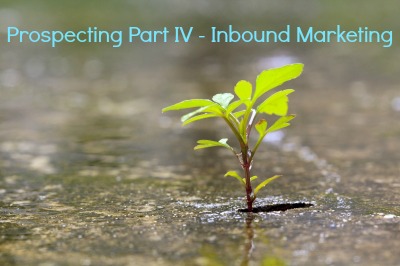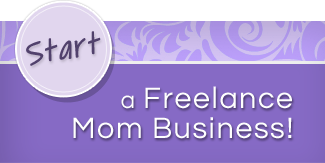
In the past weeks, we’ve been talking about the building blocks of a prospecting program that will keep you flush with the right kinds of clients.
If you’ve missed any of the first three steps, go back and catch up when you get a chance:
- Identify your ideal client
- Define your marketplace (where you’ll find those clients)
- Create a system to qualify leads
- Design infrastructure to get leads coming to you (inbound marketing)
Now, let’s turn our focus to what you really want to know: how do you get the right clients coming to you on their own without you having to go out and hustle up business?
First: Beware the Myth of “Passivity”
“Passive income,” money that you make while you travel, sleep, or generally do anything but work, is a tantalizing objective for many people who make their income online.
What could be better than making money without doing anything?
The hurdle that keeps most people from succeeding with passive income is that it is not, in fact, created by not working.
A lot of work goes into researching, designing, and setting up the marketing for products that make you money “without doing anything.”
For self-employed women, the time investment needed to create a passive income product is often far greater than the resources available, especially early on in your career.
Every moment spent on tasks that don’t produce short-term revenue has a crucial opportunity cost: the potential long-term income is detracting from the money that you can—and need to—make right now.
But there is an easy way for self-employed women to blend some of benefits of passive income generation into your marketing stream to get clients coming to you “without doing anything.”
Inbound Marketing in a Nutshell
Inbound marketing is a way to allow prospects to find you and come to you when they are ready without you explicitly searching for them.
Very simply: it’s the process of publishing valuable information online.
We’ve already talked about who your ideal client is, how to be in the right places to connect with him or her, and how to make sure he or she is right for you, and each of those components is important to inbound marketing.
Put your business, its value proposition, and its unique benefits in the path of those “right” clients in the places they go when they are looking for information about the need you fill—and give them a way and a reason to come to you—and you’ve got inbound marketing.
Getting Prospects From Where They Are to You
In the age of internet marketing, a popular opinion is that Google Adwords will completely take care of bringing partially qualified prospects directly to you. And, in a way, that’s true.
If you have an unlimited marketing budget, you can win top bids on the most relevant keywords for your products or services, and have Google directly funnel you clients looking to make a purchase.
Sounds perfect, right?
Google knows that, and charges accordingly.
But if you’ve worked through step two, you have a good idea of where your prospects are hanging out already.
Without paying Google a cent, you can go and share your knowledge in those places in a way that is more powerful than advertising. You can share knowledge that not only demonstrates to prospects that you know how to meet their need, but also encourages them to move forward with their purchase.
The most common components of an inbound marketing strategy are:
- your own blog
- social media
- search engine optimization
- guest posting
- comments on other websites
- comments in forums
Think of your inbound marketing work like building a spiderweb. Each thread that you string seems insignificant—too small to catch very many flies. But the number of singular pieces increases the number of places you could catch a fly, while also enhancing the structure and stability of the net.
The more small inbound marketing gestures you do, more people see your messaging and people see it more often, building trust.
In one week, two tweets and one Facebook post a day (scheduled in 1 hour or less at the beginning of the week), one “thought leader” Google+ update, and five thoughtful comments on other blogs or forums touches a lot of bases.
And it probably won’t take more time than you can save by not checking your email every five minutes or by ditching one reality TV show.
Over the course of a year, that’s 750 small bread crumbs and 50 meaty ideas that interested parties can follow back to your website and your business.





